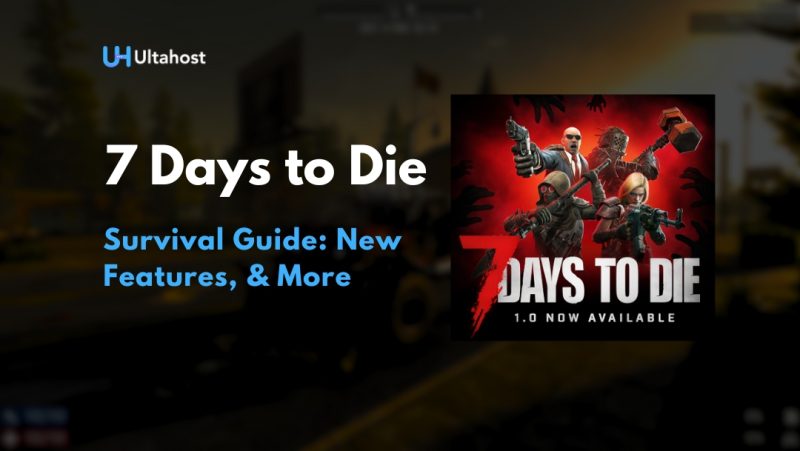Welcome to the ultimate 7 Days to Die 1.0 Survival Guide! Whether you’re a new player or someone returning to Navezgane after the game’s full release, this guide will equip you with essential information about the game’s features and mechanics.
By understanding these aspects, you can enhance your chances of surviving in this unforgiving post apocalyptic wasteland filled with relentless zombies and numerous hazards. So let’s dive right into it!
Big fan of survival games? Look into Valheim, loved by tons of players! Get ready for creepy monsters and cool crafting in our helpful guide. Jump into this popular game now!
Game Difficulty Settings
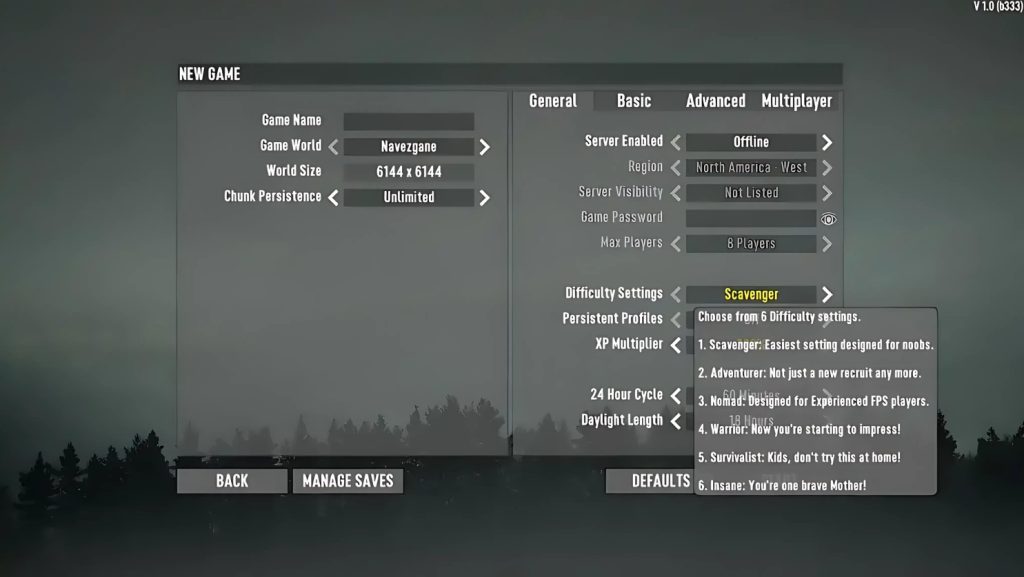
One crucial aspect of your survival in 7 Days to Die 1.0 lies within choosing the appropriate game difficulty setting. Here’s what you should expect from each mode:
- Scavenger (Easiest): You receive reduced damage from zombies but take double damage from enemy attacks. Ideal for beginners learning the ropes.
- Adventurer (Easy): Enemy damages decrease further, whereas player damage remains slightly elevated.
- Nomad (Normal): Balanced mode where enemy and player damage remain equalized. Recommended for experienced players seeking a fair challenge.
- Warrior (Hard): Expect amplified enemy damage along with decreased player damage. Prepare for tougher battles ahead.
- Survivalist (Harder): Brace yourself against intensified enemy assaults and diminished self-inflicted harm. Veterans opt for this demanding option.
- Mad (Insanely Hard): Experience extreme zombie aggression coupled with minimal personal injury potential. Only attempt if prepared to face overwhelming odds.
Electrical Systems
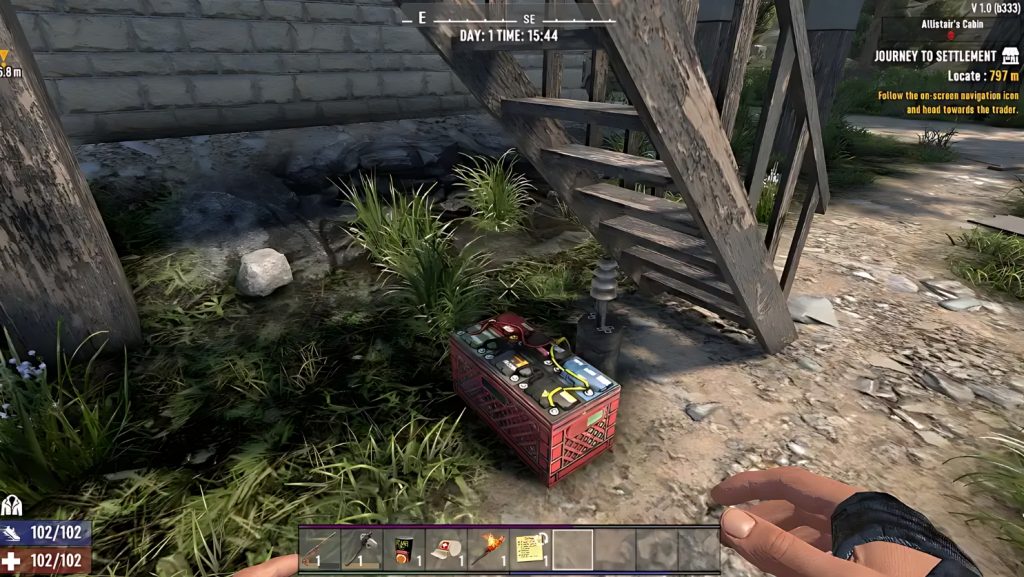
Power sources play a vital role in keeping your equipment operational; hence, creating a reliable electrical network should be among your top priorities. To establish electricity flow, follow these steps:
- Obtain a power source, e.g., a battery bank or generator bank.
- Supply the chosen power source with adequate energy storage mediums, i.e., batteries or fuel.
- Utilize wire tools to link the power source to nearby devices seamlessly.
- Activate the linked gadgetry via interaction with the power source. Successfully powered devices will spring to life.
Remember, every appliance demands varying degrees of energy input. Make sure your selected power source provides sufficient output capacity required by your connected devices.
World Maps & Points of Interest
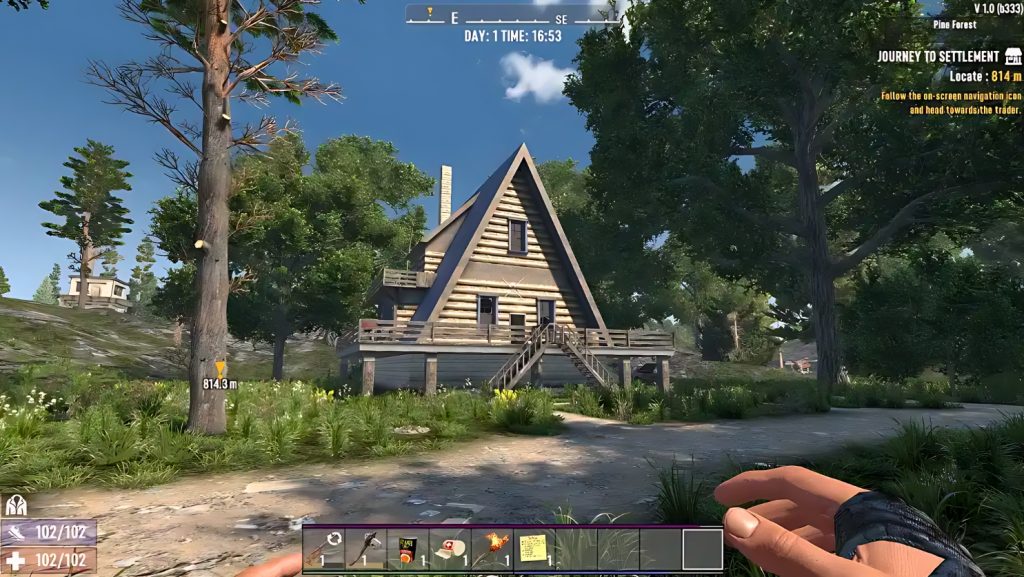
Navigating through diverse landscapes presents unique opportunities and risks. Explore intriguing landmarks scattered across Navezgane, the default map, featuring DIY areas brimming with rewards and adversaries.
With version 1.0, players now benefit from updated random world generation algorithms, offering customizable parameters and novel experiences. Key additions comprise updated biomes, conspicuous zombie spawn zones, and reintroduced burnt forests.
Player Health Management
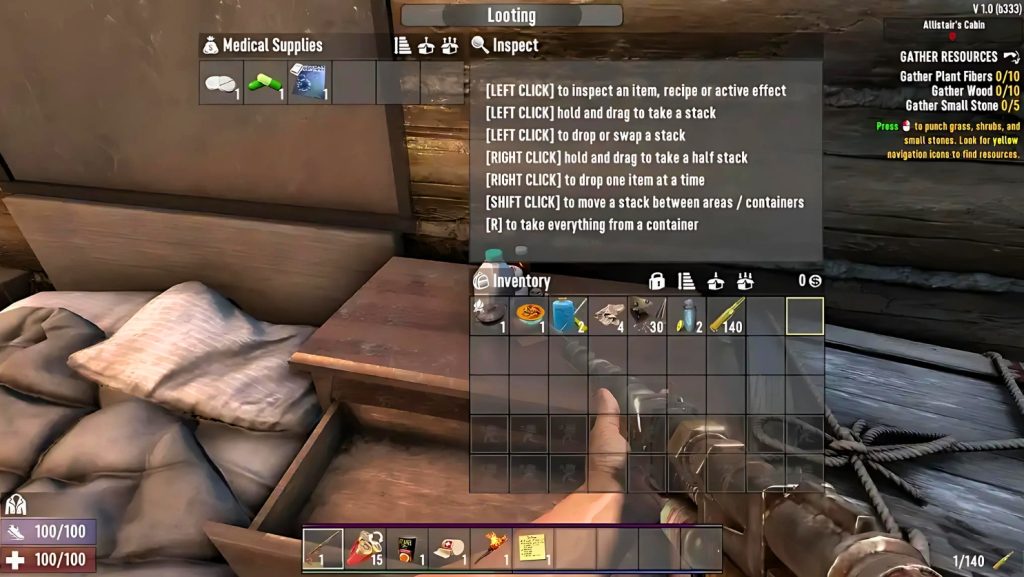
Your character’s wellbeing significantly impacts overall survival prospects. Keep track of several indicators representing physical integrity, mental stability, nutrition levels, and hydration status. Neglected conditions escalate rapidly, leading to detrimental consequences like impaired mobility, depleted stamina, or fatal injuries.
Fortunately, plentiful remedial solutions await discovery amidst ruins, abandoned settlements, or underground bunkers. Actively seek out nourishment and sustenance to ensure long-term viability in this punishing realm.
Day and Night Cycle Configurations
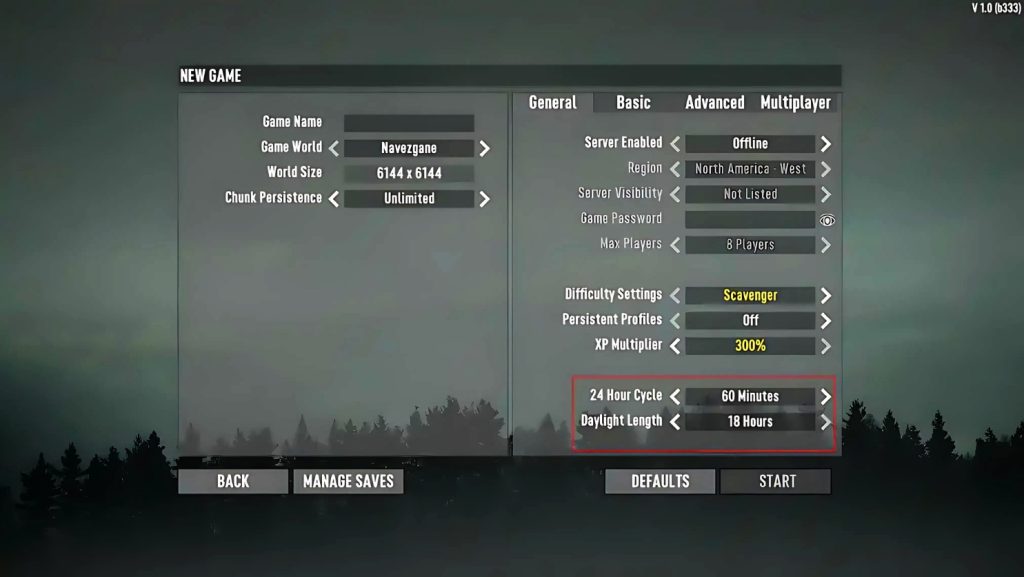
Customizing daylight duration substantially affects gameplay dynamics. Adjusting the timeframe between dawn and dusk impacts visibility, zombie behavior patterns, and exploration possibilities. Prolonged nights encourage strategic planning, cautious movement, and fortification reinforcement while shorter days necessitate swift action, efficient scavenging, and heightened vigilance.
Consider experimenting with distinct configurations until discovering optimal balance tailored to individual preferences and playstyles.
Environmental Factors – Temperature Regulation
Braving harsh climates introduces yet another layer of complexity in maintaining equilibrium. Ambient temperatures fluctuate depending on geographical region, season, and also meteorological phenomena. Consequently, characters exposed to extreme cold or warmth suffer debilitating penalties affecting multiple attributes like strength, agility, and endurance.
Mitigate exposure risk by dressing appropriately, utilizing insulating materials, or constructing climate controlled habitats equipped with heating or cooling systems.
Enhance Your 7 Days to Die Experience Now!
Elevate your gameplay with Ultahost’s Server Hosting. Enjoy low latency, smooth performance, and customizable settings. Dominate the apocalypse with our exclusive resources and expert support. Level up your gaming experience with unparalleled reliability and speed.
Combat Strategies and Weapon Selection
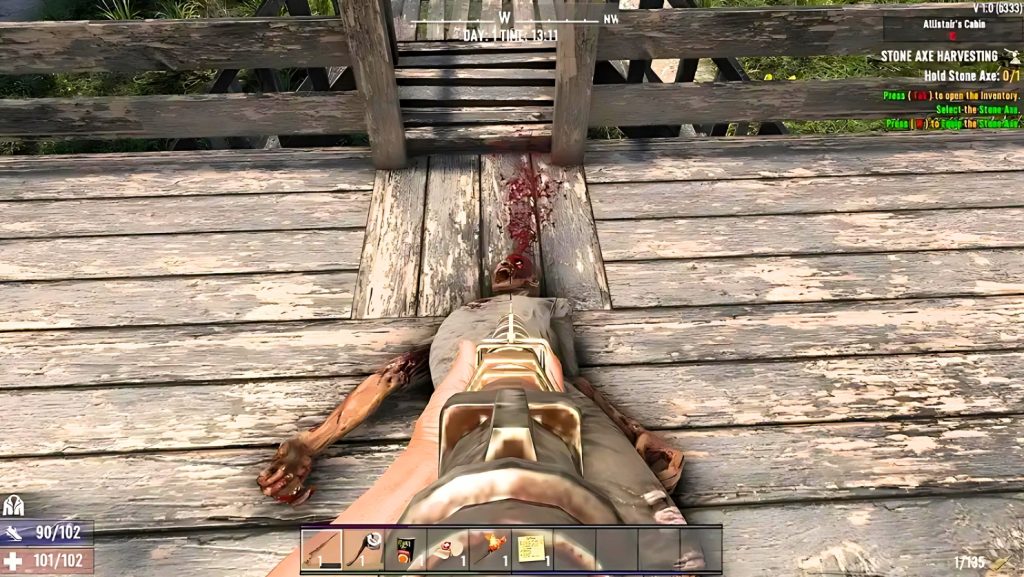
Effective engagement tactics vary according to encountered threats. Develop proficiency in employing versatile arsenals capable of addressing diverse situations efficiently. Ranged weaponry proves indispensable for tackling distant adversaries, crowd control management, or quick disposal of formidable opponents.
Meanwhile, close combat alternatives excel at conserving ammunition stocks, silently eliminating unsuspecting targets, or salvaging components from damaged gear. Optimal loadouts prioritize adaptability, reliability, and ease of maintenance.
Special Zombies Types and Behaviors
Prepare for encounters involving mutated creatures exhibiting extraordinary abilities and traits. Anticipate tactical alterations against Burn Victims inflicting fiery blows, Spider Zombies pouncing from unusual angles, or Demolishers rigged with explosives. Recognize distinctive characteristics displayed by Ferals, Virals, Bloats, and Stalkers, then respond accordingly using suitable strategies and armaments.
Mastering confrontational scenarios enhances survivability against swarms teeming with menacing variants.
Heatmaps and Their Impact on Gameplay
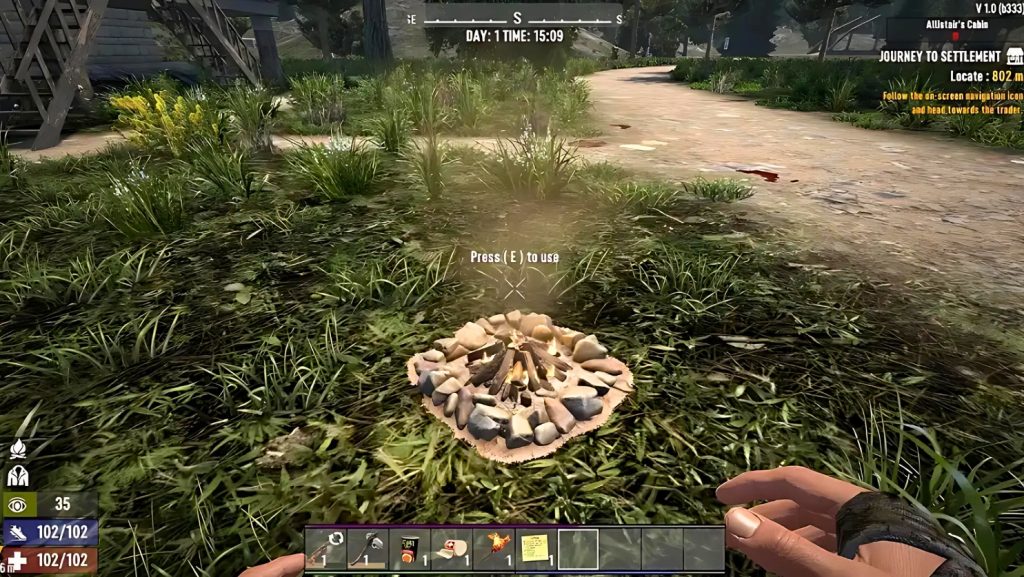
Understanding how heat maps in 7 days to die govern zombie behavior stream lines decision making processes regarding base placement, expedition routes, and noise reduction measures. Accrued activities culminating in concentrated hotspots trigger dreaded screamer events drawing hordes toward vulnerable positions.
Avoid trouble by carefully controlling activities causing warm-ups, spreading clusters, or setting up clever traps luring enemies away through cunning diversions saving yourself from certain doom. Remember, manage heat wisely; or else suffer consequences dire!
Simplified Character Customization
Streamlined apparel selection simplifies inventory management tasks allowing focus on core objectives rather than micro management chores associated with disparate protective layers. Donning complete sets bestows tangible benefits influencing weight distribution, passive bonuses, and also visual appeal.
Experiment with assorted combinations catering to specific roles or contextual circumstances ensuring comprehensive coverage under varied conditions.
Leveling Up, Skill Points Distribution, and Perk Acquisition
Embarking on ambitious journeys earns experience points propelling progression curves exponentially rewarding diligent efforts. Invest collected skill points wisely allocating them among broad categories shaping character development trajectory. Specialize in areas bolstering offensive prowess, defensive capabilities, or supportive functions imbuing protagonists with coveted advantages over time.
If you’re unsure where to start, look into the 7 Days to Die best skills recommended by experienced players, such as those improving stamina, crafting speed, and combat efficiency. Focusing on these ensures you gain long-term survival benefits while still leaving room to adapt your build as challenges evolve.
Unlock hidden talents augmenting inherent strengths, mitigating shortcomings, or conferring exclusive access privileges unlocking doors to untapped reserves.
Crafting Essentials and Resource Gathering Techniques
To do well in 7 days to die 1.0, crafting is really important! At first, use simple materials found easily like twigs, rocks, or cloth pieces to build basic stuff. But as you get better, you’ll learn how to make more complicated things requiring rare components collected from hidden spots. So explore, gather resources, and practice your DIY skills to ensure survival in this tough world!
Employ various gathering techniques optimally suited for acquiring raw materials expeditiously without compromising safety margins excessively:
- Mining: Dig into the ground to find useful ores containing important materials! These resources are needed to make powerful weapons, protective armor, and cool machines that help you survive longer against dangers lurking around every corner of this tough game world.
- Farming: Grow plants at your base for regular healthy meals instead of relying only on gathered or looted foods that might go bad when traveling far from home. Taking care of the crops will give you a lot more food than what you planted initially as long as you take good care of them by watering, protecting, and harvesting them properly. This way, you have enough food while finding dangerous areas without worrying about running out of resources.
- Foraging: Collect wild herbs, mushrooms, fruits, and other naturally occurring vegetation replenishing hunger meters gradually easing resource allocation pressures imposed by scarce provisions.
- Looting: In abandoned houses, you can find lots of things people left behind that are still useful! You may discover tools, weapons, or even pretty items with emotional meaning. Even though there’s an apocalypse happening outside, taking these treasures helps your character survive better and feel more connected to their past life before everything changed.
Base Building Fundamentals
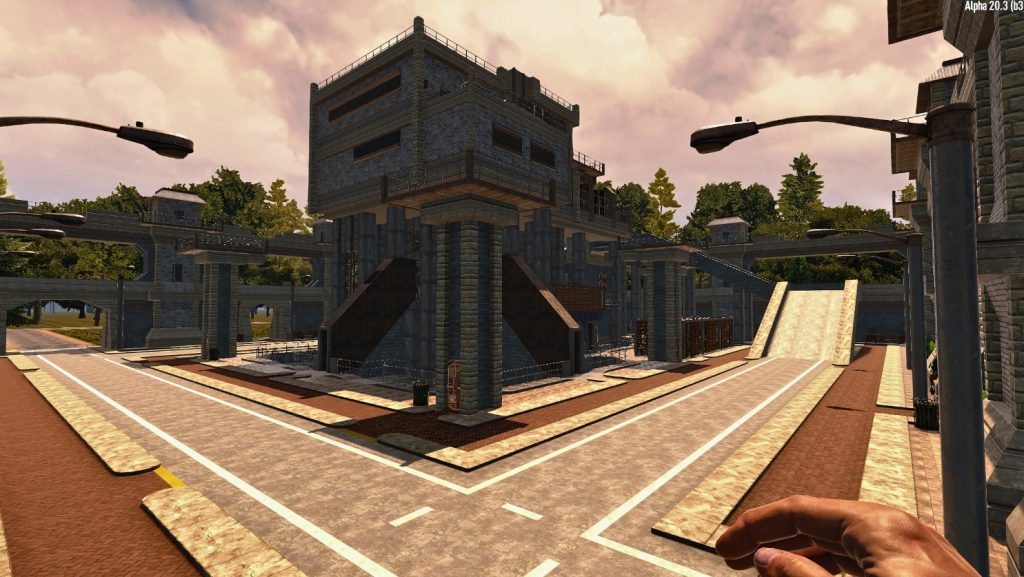
Making a safe home helps survivors live better in the dangerous game world. Focus on essential parts while planning strong structures that can handle bad weather, enemy attacks, or building problems. This way, players will have a safer place for resting between explorations and facing challenges with confidence:
- Location: Choose superior spots providing clear lines of sight approaching enemies granting early warnings before surprise attacks unfold suddenly catching defenders off guard.
- Defense Mechanisms: Put automatic guns, sharp spikes, or buttons on the floor that hurt bad people trying to enter your safe place illegally. This protects your group inside strong walls against harmful outsiders wanting to get in.
- Redundancy Measures: It’s smart to use different systems for things like water, electricity, and air in your shelter, so if something goes wrong in one system, it doesn’t cause problems for everything else. This way, people living there can stay safe and manage issues better because they plan carefully during the construction phase.
Conclusion
Using this guide for living better in 7 Days to Die version 1.0, players will be prepared to face dangerous lands, defeat scary creatures, and tackle huge challenges! They’ll have important information and lots of courage to explore new places with exciting secrets hiding around each turn. Good luck to all brave travelers through tough situations while uncovering forgotten stories meant to come back one day.
If you’re enjoying Survival in 7 Days to Die 1.0 then take your experience to the next level with Ultahost’s Gaming VPS Hosting. Elevate your gaming with dedicated resources and change able settings, making it smoother, and also lag free sessions. Dominate the complete server with advanced performance!
FAQ
What are the different game modes in 7d2d 1.0?
There are six game modes: Scavenger, Adventurer, Nomad, Warrior, Survivalist, and also Mad. Each mode varies in difficulty based on the damage dealt by zombies and players.
How do I set up an electrical system in 7d2d 1.0?
To set up electricity, obtain a power source like a Battery Bank or Generator Bank, supply it with energy, and also use the Wire Tool to connect it to nearby devices. Then, activate the devices through the power source.
How many points of interest (POIs) are there in the Navezgane map in 7d2d 1.0?
Navezgane contains various POIs, including Tier 5 ones like the Haven Hotel, 7 Days Suites, and also Navezgane Athletics Complex. Additionally, update 1.0 added more POIs through the random world generator.
How does temperature affect players in 7d2d 1.0?
Temperature in 7d2d 1.0 can impact player health, reducing hydration, stamina, speed, and health when outside the 31°F to 99°F range. Clothing, environment, and weather can influence temperature.
Which special zombies will I encounter in 7d2d 1.0?
Special zombies in 7d2d 1.0 include Burn Victim, Crawler, Demolisher, Feral Wight, Infected Police Officer, Screamer, Spider Zombie, and also Team Z Player Football Zombie. Each type possesses unique abilities and behaviors.
How does the heatmap work in 7d2d 1.0?
The heatmap tracks player activity in specific locations, and runs zombie spawns. High heatmap values lead to Screamers and also potentially massive hordes of undead enemies.
Can I repair items in 7d2d 1.0?
Yes, most items, including blocks and also structures, can be mended in 7 days to die 1.0 using the proper components and DIY stations.





